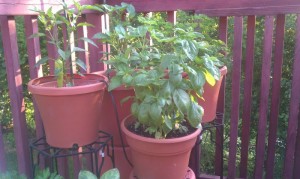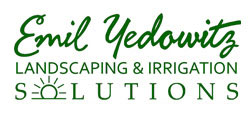Even if you don’t have room for planting beds on your property, you can still get plenty of enjoyment out of growing your own flowers, herbs and vegetables. With container gardening, a deck, patio, balcony or even a doorstep can provide all the room you need.
Choosing a Container
 Containers come in many sizes, shapes and materials. Depending on your specific tastes, you may prefer plastic, ceramic, wood or clay containers. For adequate drainage, make sure they have holes in the bottom.
Containers come in many sizes, shapes and materials. Depending on your specific tastes, you may prefer plastic, ceramic, wood or clay containers. For adequate drainage, make sure they have holes in the bottom.
The container size you will need can be determined by the type of plants you’re growing. Shallow-rooted plants (e.g. lettuce, herbs and most annuals) require a container at least 6” across and 8” deep. For deep-rooted perennials, tomatoes or cucumbers, you’ll need something larger.
Soil Type
Regular garden soil tends to hold too much moisture when used in a container, depriving the roots of much-needed oxygen. Instead, lightweight, packaged potting soil may beused, or you can make your own mix using one part peat moss, one part garden loam, and one part vermiculite or perlite. Whether you’re starting with seeds or seedlings, your container should be filled to within 2” of the top with your planting mix.
Care After Planting

Most containers need daily watering in hot, dry weather. Lighting needs will vary depending on plant type, and your container can be moved if a spot is too sunny or shady. To improve plant vigor, a slow-release fertilizer can be added every two weeks.
With just a little bit of space it easy to have your very own garden!


